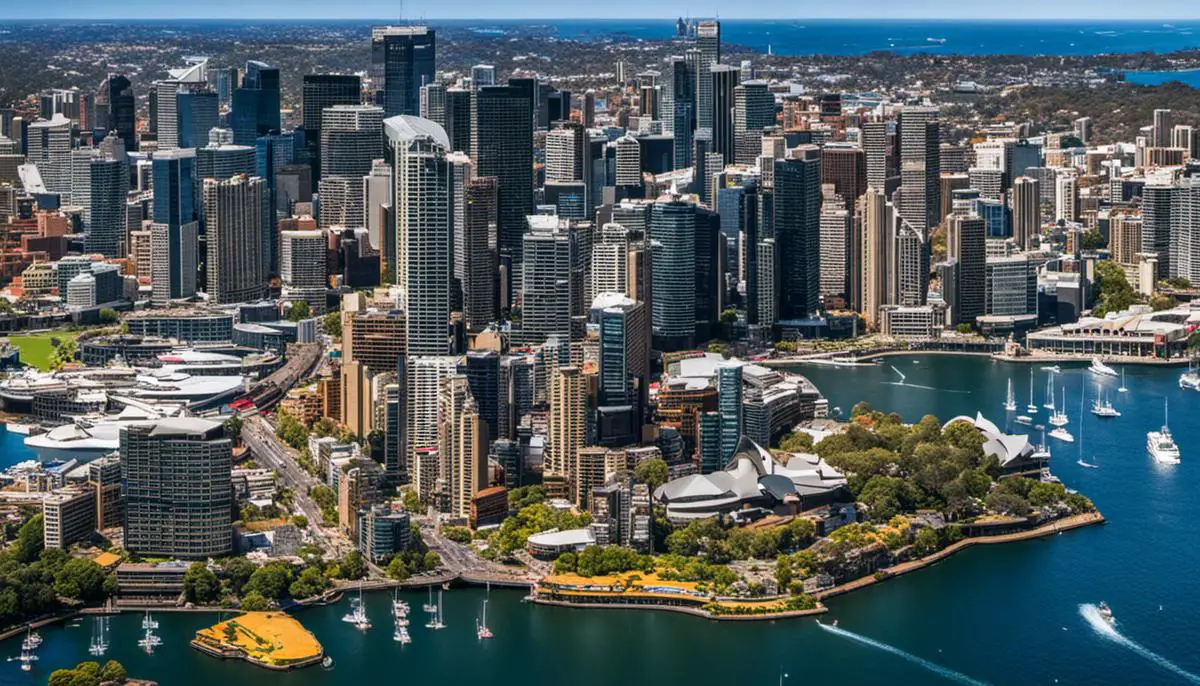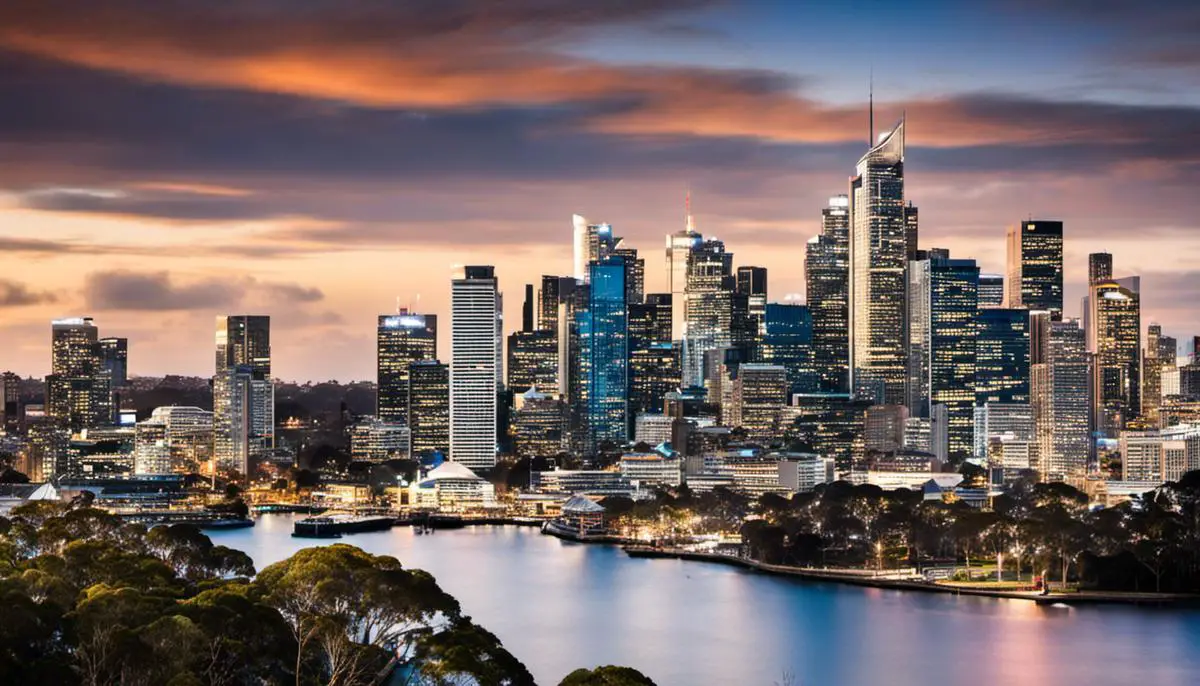Understanding the housing market in Sydney, Australia involves unpacking a series of intricate factors, both macroeconomic and regional, to construct a complete understanding of the current and future prospects of the real estate industry in the city. This examination delves into the state of housing prices in Sydney, nuances of what influences these values, comparison with other Australian cities, and anticipated trajectories of this market. From the demographic buying patterns to comparing the housing prices with other major Australian cities, this exploration makes an extensive journey through the multi-faceted landscape of Sydney’s housing market.
Current State of Housing Prices in Sydney
Current State of Housing Prices in Sydney
The current average price for a house in Sydney stands at an all-time high, reaching over AUD 1.3 million, a figure that has seen a significant 4% rise from the previous year. This rapid and steady increase reflects the robust demand in the housing market, making Sydney one of the most expensive cities in the world to live in.
The increasing costs of houses appear to mirror Sydney’s growing economic prosperity and the consequent rise in living standards. The demand side of housing remains strong, buoyed by both domestic and international buyers. Recent data reveals that young professionals, dual-income couples, and Melbourne-to-Sydney movers are the major demographic cohorts contributing to this high demand.
Despite the upscaling prices, Sydney’s housing market shows some differences among suburbs. Examining median house prices at suburb levels provides a more comprehensive perspective. For instance, Point Piper, a small harbourside eastern suburb, tops the list with a median house price over AUD 11.8 million. Bellevue Hill follows next with a median price of AUD 7.2 million. Yet, buying a house gets somewhat more affordable when you venture into suburbs like Blacktown and Penrith, where the median house prices are around AUD 750,000 and AUD 680,000, respectively.
Assessing Sydney’s Housing Market: A Retrospective Overview
Over the years, Sydney’s real estate market has surpassed its previous performance metrics. As of November 2021, the year-on-year growth rate was an impressive 22.4%. Looking back to 2015, the median house price sat around AUD 880,000. Now, it has escalated nearly 50%, showcasing the city’s robust property market that withstands global crises, such as the COVID-19 pandemic.
Demographically speaking, the composition of home buyers in Sydney remains stable. Young professionals and dual-income families are traditionally the primary contributors to the housing market. A notable shift has been observed recently, with residents from Melbourne moving to Sydney for more spacious living conditions, spurred by the flexibility of remote work.
Ultimately, an in-depth examination of current Sydney housing prices reveals an expensive, yet appealing market. It showcases significant living cost variations across its suburbs. Even with high prices, the city persists in drawing a diverse range of home buyers.

Factors Influencing Sydney Housing Prices
The Impact of Australia’s Economy on Sydney Housing Prices
The strength and stability of Australia’s economy are vital factors in shaping Sydney’s housing prices. A thriving economy can lead to an increase in jobs and purchasing power for the average consumer, thereby driving up housing demand. On the flip side, an economic slump would likely mean job losses and lower consumer spending, resulting in a decrease in housing prices. An essential part of the equation is foreign buyers, who have an integral role in the Sydney property market. When the economy is performing well, it is expected to draw more foreign investments, subsequently driving up property prices.
Employment Rates and Housing Prices
Sydney’s housing market is influenced by employment rates. A high rate of employment means that more people have the means to purchase homes, thereby increasing demand and potentially driving up prices. On the contrary, if unemployment rates rise, fewer people would be able to afford homes or secure mortgages, leading to a reduction in housing demand and possibly a dip in housing prices.
Sydney’s Population Growth
Population growth is another significant factor affecting housing prices in Sydney. As the most populous city in Australia, Sydney has been experiencing significant population growth, largely driven by overseas migration and natural increase. This translates into increased demand for housing, leading to competition among buyers and consequently, a surge in prices. With the population expected to continue on its upward trajectory, demand for housing in Sydney is likely to remain strong in the coming years, potentially exerting upward pressure on house prices.
Interest Rates and Sydney Housing Price
Interest rates are one of the key drivers of housing prices in Sydney. When the Reserve Bank of Australia (the country’s central bank) lowers interest rates, borrowing costs fall, making it cheaper for people to take out mortgages. This increases the demand for housing, and in turn, pushes up prices. Conversely, when interest rates rise, mortgage payments increase, potentially dampening demand for housing and putting downward pressure on prices.
Housing Supply and Demand Dynamics
The dynamics of housing supply and demand in Sydney are also pivotal in determining house prices. In situations where demand exceeds supply, house prices tend to rise. Conversely, when there is an oversupply of houses relative to demand, prices are likely to fall. Over the past few years, Sydney has witnessed a continual shortfall in housing relative to demand, largely attributed to the city’s strong population growth and lengthy development approval processes, resulting in increased housing prices.
Extra Factors
Other factors that impact Sydney’s housing prices include infrastructure development, policy changes, and foreign investment. Infrastructure development tends to boost local property values due to improved accessibility and amenity. Policy changes, such as alterations to zoning laws or changes to tax policy, can also influence housing markets. Foreign investors, driven by Australia’s economic and political stability, also contribute significantly to the demand for Sydney’s properties, exerting upward pressure on prices.
The Foundation
There are various influences that meld together to determine Sydney’s housing prices. These include the overall health of the economy, rates of employment, population growth trends, interest rates, and the dynamic interaction of supply and demand in the housing market. For those considering buying a home or investing in property, comprehending these variables can offer vital foresight into possible shifts in the market.

Comparison with Other Australian Cities’ Housing Prices
Comparative Scope: Sydney in Contrast with Other Major Australian Cities
Sydney boasts of high living standards, a lively culture, and solid job opportunities. All these attractive traits have given rise to a significant demand in its housing market. As a result of this, amongst all Australian cities, Sydney stands out with its remarkably high housing price tags.
Comparison of Average Housing Prices
When compared to other major Australian cities, the median price of a detached house in Sydney is considerably higher. As of late 2021, the median house price in Sydney stood at AUD 1.3 million, in contrast to AUD 908,000 in Melbourne, AUD 541,000 in Adelaide, and AUD 520,000 in Perth. This comparison clearly illustrates the disparity in housing prices among these cities.
Factors that Influence Housing Prices
A multitude of factors contribute to these discrepancies in housing costs. Economic indicators, chiefly employment opportunities and income levels, play a dominant role. Sydney boasts a thriving economic scene with numerous high-paying jobs, which pushes up the median income levels and, in turn, the housing prices.
Also, Sydney’s geographical layout leaves little room for outward extension, causing a limited supply amidst the growing demand. This supply-demand imbalance further escalifies the property prices.
Property Types: Variation Across Cities
Sydney’s housing prices are significantly higher in all categories of residential properties when compared to other cities. However, the gap narrows down when it comes to apartments and units. For instance, the median price for a unit in Sydney hovers around AUD 790,000, whereas it’s approximately AUD 600,000 in Melbourne and AUD 375,000 in Brisbane. These more competitive prices in other cities can be attributed to the higher rate of apartment construction.
Similarities in Housing Trends
While the housing prices may differ substantially, the trends and factors affecting these prices are often similar across all Australian cities. Increasing urbanization and rapid population growth, coupled with low interest rates and favourable government policies, have resulted in soaring property prices nationwide.
Recent Shifts in the Market
Despite its traditionally high prices, Sydney experienced a slight dip in housing prices during the peak of the Covid-19 pandemic. Meanwhile, cities like Perth and Adelaide observed stability or even a slight uptick in property prices during the same period. Factors like domestic migration patterns influenced by the pandemic and relative affordability could account for this trend reversal.
In Conclusion
Sydney’s housing prices continue to hold a significant edge over other Australian cities. Understanding what fuels these prices will empower prospective homeowners or investors alike to make knowledgeable decisions regarding their property investments.

The Future of Sydney’s Housing Market
Up-to-Date Snapshot of Sydney’s Housing Market
At present, Sydney’s real estate market is in a period of growth following a phase of uncertainty and caution brought on by the fallout from the COVID-19 pandemic. After initial setbacks and halted investments, the market is rebounding with record-breaking auction clearance rates and increasing median house prices. In Q1 2021, there was a 5.4% rise in Sydney’s property values, the sharpest increase since 1988. To add, the median sales price for houses in Sydney reached an unprecedented high in 2021, exceeding AUD$1.3 million. This resulted from a surge in domestic relocations coupled with purchasing power supported by low lending rates.
Factors Influencing Sydney’s Housing Market
There are several factors influencing Sydney’s housing market. Low-interest rates have made borrowing cheaper, encouraging more people to enter the property market. Additionally, governmental policies like the First Home Loan Deposit Scheme have spurred first time homebuyers’ activity. However, Sydney’s market is also grappling with limited housing supply, due to less construction during the pandemic and the return of international buyers with Australia’s borders reopening.
Expert Opinions on Sydney’s Future Housing Market
Experts predict steady growth for Sydney’s housing market in the short term. Louis Christopher of SQM Research anticipates single-digit property growth in Sydney for the coming year, depending on the quantum and timing of interest rate rises. If interest rates remain as they currently are, the growth could be in double digits. Property prices are expected to rise despite further increase in new listings, as demand remains high.
Potential Governmental Policies Influencing the Market
Governments at all levels continue to play a crucial role in Sydney’s housing market. Future policies may be introduced to address housing affordability issues, such as initiatives for affordable and social housing, zoning changes to increase housing stock, or changes in tax structures for property investments. However, potential changes in lending regulations or hikes in interest rates by the Reserve Bank of Australia could cool down the market.
Advice for Potential Homeowners or Investors
If you’re considering buying property in Sydney, experts advise staying abreast of market trends, changes in government policies, and fluctuations in interest rates. It’s essential to conduct thorough research on specific locations within Sydney, as different regions may perform variably. For investors, Sydney’s rental market could offer good returns, given the state of undersupply, slowly tightening vacancy rates, and the potential for rental growth. While Sydney’s property market has a history of high growth, cautious optimism advised as market conditions can change depending on various economic and external factors.

Making sense of Sydney’s housing market is a complex task, requiring a deep dive into current trends, influencing factors, and forecasts. It becomes clear that Sydney’s housing prices are shaped by a myriad of elements including economic conditions, employment rates, and policy changes. Comparisons with major Australian cities reveal intriguing similarities and differences that speak volumes about Sydney’s unique position in the national housing scene. The future of the Sydney housing market holds both challenges and opportunities, underscoring the need for prospective homeowners and investors to stay vigilant, informed, and adaptable in their decision-making strategies.






